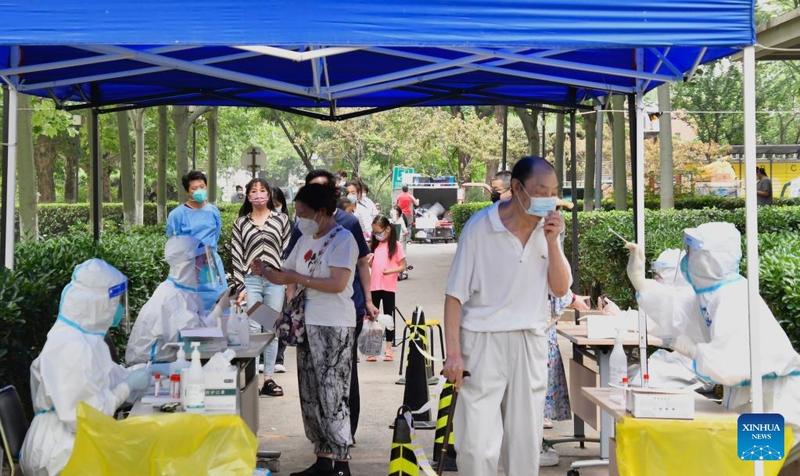 Residents wait for nucleic acid testing at Balizhuang subdistrict in Chaoyang district, Beijing, capital of China, June 11, 2022. (PHOTO / XINHUA)
Residents wait for nucleic acid testing at Balizhuang subdistrict in Chaoyang district, Beijing, capital of China, June 11, 2022. (PHOTO / XINHUA)
The National Health Commission announced the latest fine-tuning of the country's pandemic control measures on Friday. While there is no change to the "dynamic clearing" policy, the most recent adjustments are clearly meant to apply that policy in a manner that maintains its effectiveness while allowing economic and social activities to proceed as smoothly as possible.
The adjustments were timely given that many places in China are experiencing another round of conspicuous upticks in local novel coronavirus infections, and there are worries that the colder winter-spring months may bring a fresh wave of outbreaks across the country. The latest moves are therefore, as the National Health Commission said, "accurate" and "scientific" pandemic control measures in light of the actual situation.
Among the 20 measures the Joint Prevention and Control Mechanism of the State Council announced on Friday, are adjusting risk areas into high and low categories, shorter quarantines for inbound travelers and the "close contacts" of those infected, lifting restrictions on "secondary contacts", and removal of the "circuit breaker" mechanism for incoming international flights. There are also clear requirements for the guarantee of services to people in home-isolation and quarantine. The measures represent a well-balanced move to ease the disruptions to people's lives and further open up the country to inbound travel.
As long as the discourse about pandemic containment protocol proceeds on the track of reason and science, updating the policy in accordance with the changing pandemic situation is the correct approach. At a news conference on Saturday, National Health Commission officials promised to continue fine-tuning the pandemic response going forward.
The Chinese model of pandemic containment, featuring early detection and early intervention, has proven efficient and contributed greatly to the country's achievements in the initial stage. But as the virus has mutated and more variants have emerged that are able to spread at a faster pace, finding ways to make quicker targeted interventions to shorten and break transmission chains has become the focus so as to keep the disruptions to people's lives and economic operations to a minimum.
The latest measures show that with the benefit of experience, local governments are expected to be on the alert for any emergence of the virus and to respond in a timely manner so that they do not need to adopt a belated and widespread one-size-fits-all approach to try and contain the outbreak.
By making early, rapid responses to any outbreaks, local governments can minimize the impact of the prevention and control measures on economic operations and the disruptions to people's lives. The latest adjustments make the prevention and control work more standardized and agile, and mean that if everyone fulfills their duties and responsibilities all will be able to reap the benefits.


